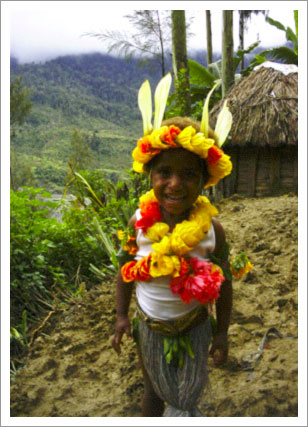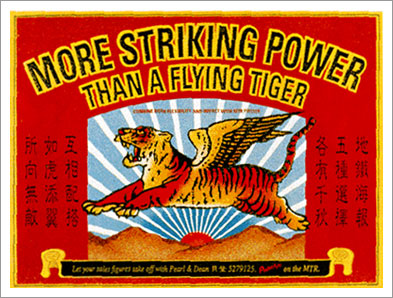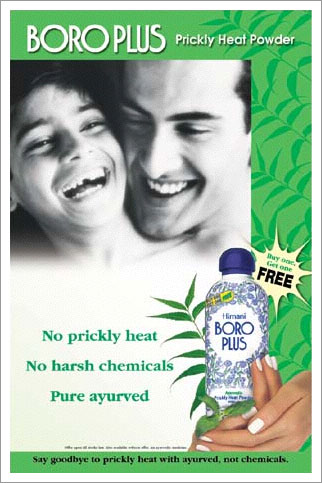"Globalization." It means the world is shrinking, or that it is speeding up, or that the connections within it grow more dense. Or something. Frankly, I'm a little unclear about exactly what it is. But I do know that it seems to come in two flavors. On the one hand, there is "big-picture" globalization full of acronyms of rule -- ILO, UN, NATO, ASEAN, WIPO, ADB -- that send money and troops to corners of the globe that we Chicagoans find obscure. And on the other is a second, more intimate way in which globalization touches our lives. When James Beard first published his famous cookbook in the late Forties, the American palate was so untutored he had to specify that the ingredient "sour cream" wasn't actually cream that had gone sour. But today discerning hipsters cruise China Town for taro bubble tea and Devon Avenue for sag paneer.
Sure, international trade has brought foreign goods to far-away consumers ever since Babylonians started importing cloves from Eastern Indonesia five thousand years ago. But there's an immediacy to our present-day incongruities which feels deeply new. Our lovers are different colors now, our cuisines more eclectic, the politics of our mixing more complex. And nowhere is this made more real, more incarnated for us then at the point where this global flow articulates with our bodies, where topical globalization is made manifest literally on the skin.
That's right, my friends: I'm talking about ointment.
Black Orchid Hair Food
I begin my tour of ointments I have known with a fun game all you white kids can try the next time you're at work: find your nearest African-American coworker and ask the following: "I couldn't help but notice that you are a different color from me and smell different than I do. Do you use a different kind of soap than me, or does black skin just smell different from white skin?" If you haven't been slapped yet, you can go on to ask the next logical question: "Your hair seems thicker than mine. Why is that, do you think?"
Racism in the United States has put certain topics off limits, and one of the most spectacularly off-limit topics is the physical differences between white and black bodies. When it comes to personal grooming products and and race, we don't go there. This wasn't the case, however, when I was living in the Porgera valley of Papua New Guinea while doing research for my Ph.D. in anthropology. Contacted by the "outside world" in 1939 and not effectively "pacified" until 1962, the Porgeran experience with whites was limited to images on television, the glimpse of a white guy inside a car, and the worship of the almost gratuitously aryan Christian man-god, Jesus.
People in Porgera were fascinated by my body and weren't afraid to show it. I spent a lot of time getting stroked on buses by random people who thought I wouldn't notice if they copped a feel. We talked about it a lot, too, and our differences started to matter to me as well. Traditional decoration involved sticking feathers in your hair, and I always looked sorta dopey having to kinda like, strap them onto my head instead.

Rosemary, an adorable Porgeran child. Note feathers.
Suddenly I was a Jewish intellectual in a world of black personal hygiene products. What I considered a "normal comb" was impossible to find. And sunscreen? Forget it. So it came to pass that I began using local hair care products, mostly to take care of the massive, Hestonesque Moses-beard I grew. And what sort of exotic, mysterious ointments do they use in the forgotten heart of the land that time forgot? Black Orchid Hair Food, manufactured in that most myseriously distant of locations of Lander, New Jersey. Globalization had followed me from New Jersey to Porgera. Or, perhaps, I had followed it.
And so it is that when I see Black Orchid hair care products in the innumerable beauty shops that dot the South Side neighborhood where I live, they remind me not of my own experience of racial separation in the United States, but of the honest exploration of physical difference I encountered in Papua New Guinea. Although I'm not sure this is always a good thing. Last week I was at the Harold's Fried Chicken on 53rd and Woodlawn when I opined nostalgically to a friend of mine that I liked black hair "because you can put feathers in it." Well, you can imagine how that went over.
Tiger Balm
If Black Orchid Hair Food is an American ointment that reminds me of a foreign place, Tiger Balm is an imported ointment that reminds me of home. While Tiger Balm has its origins in the entrepreneurial ingenuity of two brothers in Singapore in the 1920s, the smell of Tiger Balm always takes me back to my roots in the central valley of California.
I can't remember a time without tiger balm. Growing up as the first son of Honorable Headmaster Arnold M. Golub I was inducted into the rigorous physical regime of Kosho-Shorei True and Pure Karate and Kenpo at an early age. From the earliest days of my training, Tiger Balm remained my true boon companion. Whether used to provide relief to aching joints after a simple two-hour Mantis Rapture kata, or mixed with scorpion venom and drunk to induce prophecy, I came to count on Tiger Balm countless times when I felt I needed a little extra oomph to take my performance to the next level.

Helps you get higher than a flying tiger.
I'm not the only one to have noticed. Although originally designed as a topical analgesic to sooth the coats of the large felines they kept as pets, the Haw Par brothers quickly realized their potent ointment possessed properties beyond the simple purveyance of balm to tigers. Today Tiger Balm can be used for just about anything. A thick dollop over a sprained ankle can soothe and relieve, while a thin coating around a doorway or gate will ward off most undead with less than eight hit dice.
Tiger Balm is now in distribution across the planet from New Zealand to Norway. Its soothing, tingly relief can be found in over a hundred countries. And there, if you will, is the rub: despite its global reach Tiger Balm always seems an intimate part of my life.
Towards a Comparative Theory of Ointment: Himani Boro Plus Ayurvedic Prickly Heat Powder
Ah, the tropics! The swaying palm trees, the crystalline blue waters lapping on white sand beaches! The tropical ulcers, the chloroquine-resistant mosquitos! Let's be honest here, despite all the great diving and cheap mangoes, you can only be so excited about an environment which can rot leather.
Prickly heat is when your body sweats more than your skin can pass -- think of it as a pore-throughput bottleneck. The solution to the problem is "prickly heat powder," which is basically talcum powder plus kalamine lotion. Although widely available in many tropical countries, the cooling, dry relief of prickly heat powder is hard to find in the City of Big Shoulders. And this despite the fact that for three months out of the year Chicago is more swelteringly pore-throughput-bottleneck-inducing than Wewak, Ambunti, and Drekikir all rolled into one. Ironic, no?

A poster for Boro Plus Ayurvedic Prickly Heat Powder.
Technically not an ointment, but who's counting?
There are options. St. Luke's Prickly Heat Powder, for instance -- a Thai import. The problem with St. Luke's is that it's mentholated. That's right, mentholated. I don't mind menthol in my cigarettes but it feels a little creepy to mentholate your body just for the sake increased pore throughput. The true solution is Boro Plus Ayurvedic Prickly Heat Powder. Ubiquitous in India yet impossible to find even on Devon Avenue, it's clean, pure, and perfect. Plus it's Ayurvedic. I'm not sure what that means, but I think is related to the fact that when I used it in Udaipur I grew six extra arms and felt a nigh-irresistable urge to make my body a vehicle for Hanuman the monkey god. Which was sort of a drag, really, since I always associate that sort of thing with college and really don't find it that much fun anymore.
The relative absence of Boro Plus Ayurvedic Prickly Heat Powder in the greater Chicagoland area indicates that my theory of the globalization of ointment remains incomplete. We may be spreading ointment on ourselves across the globe, but the ointment itself does not yet have a global spread. And as much as I've come to rely on ointments from afar, I find it comforting that there are some things that are still truly local. Topical globalization, it appears, still has a little way to go. And perhaps that's not such a bad thing.





